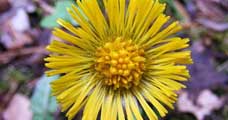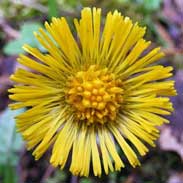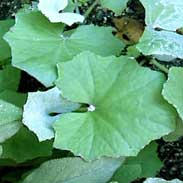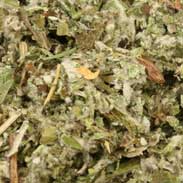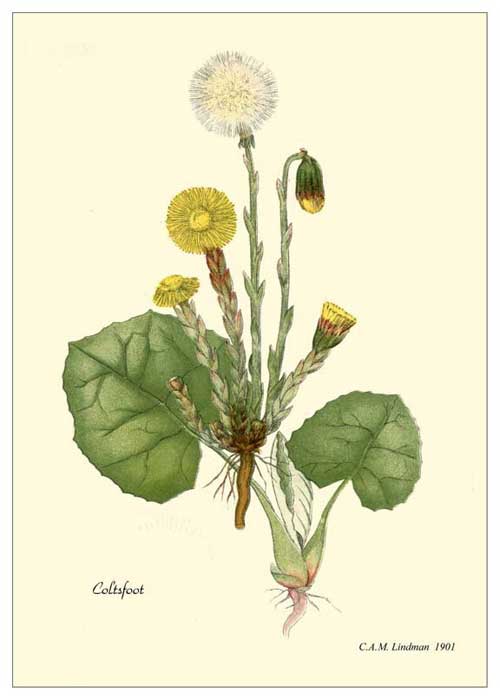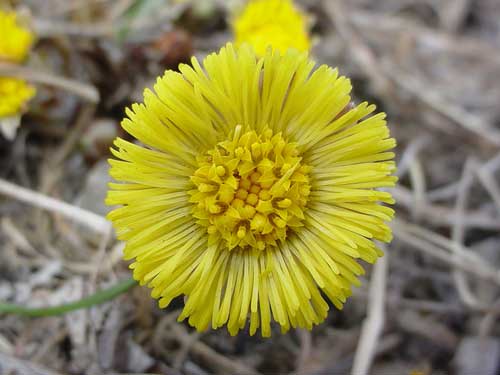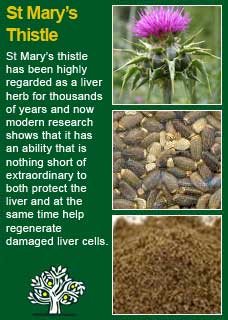
|
|
||||
| Our Pages ABOUT CONSTITUTIONAL MEDICINE
|
The leaves and the flowers of Coltsfoot, a herb that spreads and grows prolifically in damp places and where the soil is heavy in clay. It produces yellow flowers early in spring that resemble Dandelions which then transform into a downy white globe at the same time as its leaves appear. The leaves resemble the cross section of a colt’s foot, hence its common name. The Botanical Latin name ‘Tussilago’ literally translates to ‘cough suppressant'
Coltsfoot has been highly regarded for millennia as one of the best medicines to use when there is a non-productive, dry and irritating cough. Unfortunately, the discovery that Coltsfoot contains substances (called pyrrolizidine alkaloids) that can be harmful to the liver means it use has been greatly curtailed but it is still available to use so long as it is taken with great care to not do harm. King's Dispensatory writes 'Coltsfoot may be regarded as emollient, demulcent, and tonic. It relieves irritation of the mucous tissues. The decoction has been found useful in coughs, asthma, whooping-cough, laryngitis, pharyngitis, bronchitis, and other pulmonary affections and in gastric and intestinal catarrh'
I have used Coltsfoot enough times in my work to have a profound respect for just how effective it can be but equally of course I must have deep misgivings about using any herb that may do harm. The great problem with the pyrrolizidine alkaloids is that they do damage to the liver in an invisible way. People who have been poisoned by them may not feel anything wrong at the time and it has only been after very serious liver damage that the cause has been able to be traced back to one of the pyrrolizidine alkaloid containing foods or medicines. In each case where this has happened it seems that there has been an ingestion of the food or herb that has been much higher than typical or that it has been an infant or young child who has been adversely affected (children’s livers being physically smaller they are much more vulnerable to anything that has the potential to harm the liver). There are many who believe that the traditional use of Coltsfoot at reasonable doses is very safe and it has only been when people have greatly overused such substances that there have been problems. And there are those who believe that any substance with the potential to do harm should never be used as a medicine… (by that standard virtually all pharmaceutical medicines would be forbidden so there may be some room for a middle ground in this controversial subject!) There are many times when a cough is a necessary and potentially life-saving reflex that should, if anything, simply be encouraged to be more productive and certainly there are many herbs that work very well to support an unproductive cough or to sooth airways that are sore or irritable (e.g. White Horehound, Mullein, Licorice root and others). There are times however when in my own experience it has seemed that there is nothing that works as well as Coltsfoot to help a cough that is just going on and on without any progress or production. I personally use Colstfoot very rarely and only when other safer measures have failed and I would not use it for a child in any circumstance. I pretty much only use Colstfoot in a tea form which is how I think it is best to harness its striking medicinal action as quickly as possible. In these situations, large doses do not appear to be necessary, e.g. a tsp to a cup of boiled water, possibly sweetened with honey and sipped whilst hot seems to make a great deal of difference to the cough for some time and so allow the healing process a better chance to move forward. For the safety concerns mentioned above it is obviously wise to only use Coltsfoot for as long as necessary but if I will be giving it for more than just a few days then my practice is to use a course of St Mary’s thistle at the same time to help reduce the possibility of anything untoward happening to the liver over the course of treatment.
For some years now, against this proven and safe way of herbalism, there has been a rising tide of excessive caution and scare-mongering in many parts of the world. The same authorities that, not so long ago, decried herbal medicines as ineffectual, have now taken up a different adversarial position; that they are dangerous substances that should only be prescribed by Doctors, who of course have zero training in them. Unfortunately, the same unnecessary fear and worry has crept into many natural health websites and popular publications on herbs. Herbs that we have safely used for thousands of years, that have no reports of adverse reactions in the medical literature despite widespread use by millions of people, are suddenly described as contraindicated because of something that should have been seen as completely unimportant, or at the utmost a merely theoretical concern, such as a laboratory study on one of the herb's constituents to use an all too common example. I wonder sometimes if the writers of such articles feel that the herb will be more deserving of respect if it is thought to be a little bit dangerous, in other words more like a drug than something that has simply come out of the earth and been used by ordinary people for generations beyond count. There is just so much misinformation about herbal medicine on the internet now. Ludicrous claims and cautions abound in equal measure; it seems like one group are trying to make money out of the public whilst the other are busily trying to scare them off. I have to believe that the kind of reader who takes the time to read pages on herbs that are as extensive as this one is much less likely to be swayed by marketers or misinformers. I hope that you will keep your wits about you if you get conflicting opinions from people who have never really got to know these herbs, who have never worked with them, or learned how to use them safely and effectively. I want to remind you that the reason that herbs can never be patented and owned by any individual or corporation is because they are, and always will be, the People's medicine. They belong to all of us and it is my great hope in sharing this work that you will learn how to use them wisely for yourself, and the people you care for. Be safe, but do not be afraid.
Coltsfoot's potent cooling action and steady increase of effect may make it particularly helpful for problems when a cleansing action is needed in the 'cycle of healing', more about that here
Please understand that I cannot advise you, including on products or dosage, without seeing you in person in my clinic but for ideas
on how you might find a good herbalist in your area read here |
|
|
© 2011 R.J.Whelan Ltd
